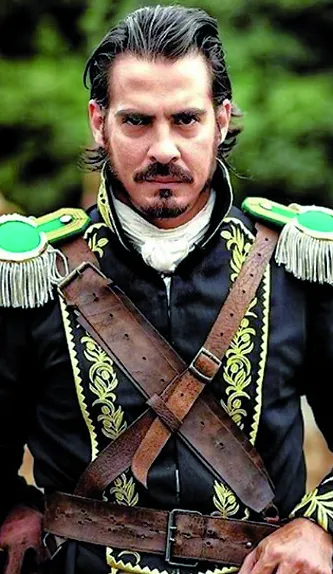[ENG/ESP]Tips from the Owl: Let's write with rhetoric part 1/Consejos del Búho: Escribamos con retórica parte 1


Dicen que la retórica es el arte de emplear las palabras de forma intencionada y elegante, sea esta de forma escrita u oral. Dicen también, que la misma viene desde la antigua Grecia y ha sobrevivido hasta nuestros tiempos.
La retórica es un arte que tiene muchas figuras que podemos utilizar en nuestras redacciones de forma consciente (Aunque por naturaleza la hemos utilizado de manera inconsciente) lo cual permite poder desarrollar impacto, persuasión y elegancia en el desarrollo de cualquier temática por medio de nuestras redacciones cualquiera sea nuestro tipo de contenido.
La retórica es un arte que tiene muchas figuras que podemos utilizar en nuestras redacciones de forma consciente (Aunque por naturaleza la hemos utilizado de manera inconsciente) lo cual permite poder desarrollar impacto, persuasión y elegancia en el desarrollo de cualquier temática por medio de nuestras redacciones cualquiera sea nuestro tipo de contenido.
They say that rhetoric is the art of using words in an intentional and elegant way, whether it is written or oral. They also say that it comes from ancient Greece and has survived to our times.
Rhetoric is an art that has many figures that we can use in our writing consciously (although by nature we have used it unconsciously) which allows us to develop impact, persuasion and elegance in the development of any topic through our writing whatever our type of content.
Rhetoric is an art that has many figures that we can use in our writing consciously (although by nature we have used it unconsciously) which allows us to develop impact, persuasion and elegance in the development of any topic through our writing whatever our type of content.

Sirva la presente como una especie de guía de algunas “figuras” (son más de doscientas, acá compartiremos las más utilizadas, en mi caso) siendo lo expresado acá, un punto de vista personal de lo que conocemos sobre ella; desde el desarrollo de mis publicaciones en este blog, partiendo de los aportes aprendidos con la Oratoria con la Escuela Venezolana de Oratoria y el Instituto Areté de Formación en Oratoria en la ciudad de Guanare - Portuguesa en Venezuela, por tanto, muchos de los conceptos son paráfrasis; desde mi punto de vista.
Ustedes como lectores están en la facultad de ampliar más sobre el tema; entendiendo que el mismo no significa, como bien he dicho; la verdad absoluta; es más, en este caso, puedo someterme a la investigación de cada quien. Sin más que decir; comencemos con las figuras de ornato, que como su nombre lo indican son figuras de “adorno” Entre ellas tenemos:

Ustedes como lectores están en la facultad de ampliar más sobre el tema; entendiendo que el mismo no significa, como bien he dicho; la verdad absoluta; es más, en este caso, puedo someterme a la investigación de cada quien. Sin más que decir; comencemos con las figuras de ornato, que como su nombre lo indican son figuras de “adorno” Entre ellas tenemos:

This serves as a kind of guide to some "figures" (there are more than two hundred, here we will share the most used, in my case) being what is expressed here, a personal point of view of what we know about it; from the development of my publications in this blog, starting from the contributions learned with Oratory with the Venezuelan School of Oratory and the Areté Institute of Oratory Training in the city of Guanare - Portuguesa in Venezuela, therefore, many of the concepts are paraphrases; from my point of view.
You as readers are in the power to expand more on the subject; understanding that the same does not mean, as I have said; the absolute truth; moreover, in this case, I can submit to the investigation of each one. Without more to say; let's start with the figures of ornament, which as its name indicates are figures of "ornament" Among them we have:

You as readers are in the power to expand more on the subject; understanding that the same does not mean, as I have said; the absolute truth; moreover, in this case, I can submit to the investigation of each one. Without more to say; let's start with the figures of ornament, which as its name indicates are figures of "ornament" Among them we have:



Ejemplo: “Este gran trompo donde todos habitamos” (Está entendido que ese “gran trompo es el planeta tierra”) “Los dos espejos que siempre me observan” (hablamos de la mirada, partiendo del dicho que los ojos son los espejos del alma)

Example: "This big top where we all live" (It is understood that this "big top is the planet earth") "The two mirrors that always observe me" (we speak of the look, starting from the saying that the eyes are the mirrors of the soul...) "The two mirrors that always observe me" (we speak of the look, starting from the saying that the eyes are the mirrors of the soul...).


Ejemplo: “Allí marchan los sin techos” se da a entender que hablamos de las personas que no tiene techo propio, generalizando que todos los que marchan no lo poseen. “Venezuela le gana 2-0 a Argentina” En vez de decir que la selección de fútbol venezolana (y no el país) le gana 2-0 a la selección de fútbol de Argentina.

Example: "Allí marchan los sin techos" (The homeless march there) implies that we are talking about people who do not have their own roof, generalizing that all those who march do not have one. "Venezuela le gana 2-0 a Argentina" Instead of saying that the Venezuelan soccer team (and not the country) wins 2-0 to the soccer team of Argentina.


Otro aporte: “Se robaron un Picasso” para decir que se robaron una pintura de ese artista, se sustituye el objeto por el sujeto. Otros ejemplos: “El Pentágono ya opinó al respecto” “A los pocos metros, logró conseguir el oro”

Another contribution: "They stole a Picasso" to say that a painting by that artist was stolen, substituting the object for the subject. Other examples: "The Pentagon has already expressed its opinion on the matter" "A few meters away, he managed to get the gold.


Es bueno aclarar que esta figura retórica está influenciada por los marcos territoriales de dicho personaje, siendo estas antonomasias de carácter local, regional, nacional, internacional o universal de acuerdo al caso.

It is good to clarify that this rhetorical figure is influenced by the territorial frameworks of said character, being these antonomasias of local, regional, national, international or universal character according to the case.



Créditos/Credits:
The images are hyperlinked to their source, belonging to their authors, in the case of the avatar of the girl with owl; the same one was made with great art by @equipodelta...
The paragraph separators were made in Microsoft Power Point
English is not my native language, so I may have grammatical errors, for this I used the translator: https://www.deepl.com/ ... God bless you...
The paragraph separators were made in Microsoft Power Point
English is not my native language, so I may have grammatical errors, for this I used the translator: https://www.deepl.com/ ... God bless you...
Las imágenes están hipervinculadas a su fuente, perteneciendo a sus autores, en el caso del avatar de la niña con búho; la misma fue realizada con mucho arte por @equipodelta...
Los separadores de párrafo los realicé en Microsoft Power Point
El inglés idioma no es mi idioma nativo, por tanto puedo tener errores gramaticales, para ello usé el traductor: https://www.deepl.com/ .. Dios les bendiga...
Los separadores de párrafo los realicé en Microsoft Power Point
El inglés idioma no es mi idioma nativo, por tanto puedo tener errores gramaticales, para ello usé el traductor: https://www.deepl.com/ .. Dios les bendiga...

For more information about my universe, you can follow my social networks (click icons)
Para mayor información de mi universo, puedes seguir mis redes sociales (hacer clik iconos)






